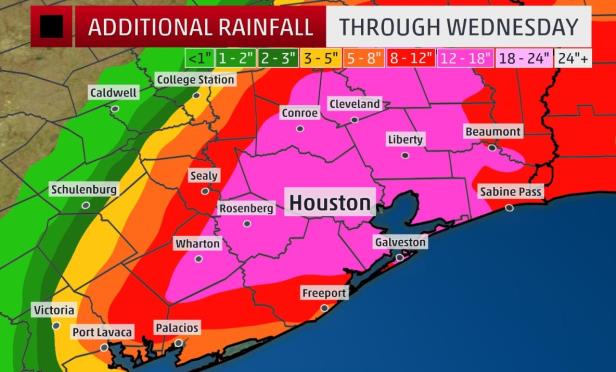HOUSTON—The storm is still ongoing in the metro area and may continue for several days. The US Army Corps of Engineers announced its plans on Sunday to begin releasing water into Buffalo Bayou from the Barker and Addicks reservoirs on the western outskirts. The engineers said water was to be very slowly released from the dams Monday to prevent uncontrollable flooding in downtown and the Houston Ship Channel. The water contained by the dams was described as “unparalleled in the dams' history.” The waters are rising by roughly 4 inches every hour.
Residents are advised to only call 911 with immediate needs for medical attention or evacuation assistance. If the lines are jammed on 911 on the first try, the Federal Emergency Management Agency/FEMA advises callers to continue dialing.
Another option is to place a call to one of five numbers for the Houston Command Center of the US Coast Guard. The numbers are 281-464-4851, 281-464-4852, 281-464-4853, 281-464-4854 and 282-464-4855.
Recommended For You
Want to continue reading?
Become a Free ALM Digital Reader.
Once you are an ALM Digital Member, you’ll receive:
- Breaking commercial real estate news and analysis, on-site and via our newsletters and custom alerts
- Educational webcasts, white papers, and ebooks from industry thought leaders
- Critical coverage of the property casualty insurance and financial advisory markets on our other ALM sites, PropertyCasualty360 and ThinkAdvisor
Already have an account? Sign In Now
*May exclude premium content© 2025 ALM Global, LLC, All Rights Reserved. Request academic re-use from www.copyright.com. All other uses, submit a request to [email protected]. For more information visit Asset & Logo Licensing.









